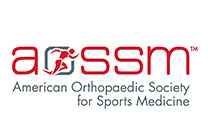What is Adductor Avulsion Repair with Aponeurotic Plate Repair for a Groin Injury?
The adductor muscles are a bunch of muscles in the groin area that is comprised of 6 main muscles: adductor longus, adductor brevis, adductor magnus, obturator externus, gracilis, and pectineus. They begin at the pelvic bone and attach at the femur (thigh) and tibia (leg) bones. Their chief function is to bring the thigh and hip towards the body (adduction). An adductor strain or groin strain is a pull, stretch, or tear in any of these muscles or their tendons and is one of the most common causes of medial leg and groin pain, especially among athletes. Nearly 64% of all groin injuries involve the adductor tendons and avulsion (complete detachment) is noted in about 75% of these injuries.
Adductor avulsion repair with aponeurotic plate repair for a groin injury is a surgical procedure to treat muscle imbalance of the rectus abdominis muscle, adductor longus muscle, and/or the inguinal ligament at the pubic bone. All of these structures come together and form an aponeurotic plate. The fusion of the tendon fibers and ligament attaches to the pubis or pubic bone (one of the 3 main bones that make up the pelvis).
Indications for Adductor Avulsion Repair with Aponeurotic Plate Repair for a Groin Injury
Adductor avulsion repair with aponeurotic plate repair for a groin injury is mainly indicated for the treatment of a rectus abdominis–adductor longus (RA-AL) aponeurotic plate injury in the groin that is commonly associated with a sports hernia, athletic pubalgia, or a core muscle injury. It causes significant dysfunction in athletes and is manifested by symptoms, such as:
- Pain in the inner thigh (anywhere from the hip to the knee)
- Decreased strength in the upper leg
- Bruising or swelling in the groin area
- Difficulty walking or running
- Pain when you bring your legs closer
- Pain when you try to raise your knee
Preparation for Adductor Avulsion Repair with Aponeurotic Plate Repair for Groin Injury
Preoperative preparation for adductor avulsion repair with aponeurotic plate repair for a groin injury may involve the following steps:
- A review of your medical history and a physical examination are performed by your doctor to check for any medical issues that need to be addressed prior to surgery.
- Depending on your medical history, social history, and age, you may need to obtain dental clearance and undergo tests such as blood work and imaging to help detect any abnormalities that could compromise the safety of the procedure.
- You will be asked if you have allergies to medications, anesthesia, or latex.
- You should inform your doctor of any medications, vitamins, or supplements that you are taking or any conditions you have such as heart or lung disease.
- You may be asked to avoid medications such as blood thinners, aspirin, or anti-inflammatories for a specific period prior to surgery.
- You should refrain from alcohol or tobacco at least a few days prior to the surgery and several weeks after as it can hinder the healing process.
- You should not consume any solids or liquids at least 8 hours prior to surgery.
- You should arrange for someone to drive you home after surgery.
- A signed informed consent form will be obtained from you after the pros and cons of the surgery have been explained.
Procedure for Adductor Avulsion Repair with Aponeurotic Plate Repair for Groin Injury
In general, the procedure for adductor avulsion repair with aponeurotic plate repair will involve the following steps:
- You will be administered local or general anesthesia prior to beginning the surgery and placed in a face-down position on the procedure table with the hip flexed and abducted.
- A lower groin skin crease incision will be made with a meticulous blunt dissection down to the pubic symphysis.
- A bare section on the pubic symphysis where the avulsed tendon was earlier attached will be detected along the proximal end of the tendon 2 cm distally.
- The bony and avulsed end of the adductor tendon will be freshened (the act of scraping and removing dead tissue to make the wound fresh) with a blade and reattached to the pubis with 3 suture anchors.
- The suture anchors will be placed into the bone with a good grasp and sutured to the tendon utilizing a modified Kessler-type technique.
- The tendon sheath including the aponeurotic plate will be repaired and the wound will be thoroughly washed out and closed in layers. A sterile dressing is applied to the wound to complete the procedure.
Postoperative Care and Recovery
In general, postoperative care instructions and recovery after adductor avulsion repair with aponeurotic plate repair for groin injury may involve the following:
- You will be transferred to the recovery area where your nurse will closely observe you for any allergic/anesthetic reactions and monitor your vital signs as you recover.
- You may notice pain, swelling, and discomfort in the groin area. Pain and anti-inflammatory medications are provided as needed for comfort.
- Antibiotics are also prescribed to address the risk of surgery-related infection.
- You are encouraged to walk with assistance as frequently as possible to prevent the risk of blood clots.
- Instructions on surgical site care and bathing will be provided to keep the wound clean and dry.
- Refrain from strenuous activities for the first few months and lifting heavy weights for at least 6 months. A gradual increase in activities over a period of time is recommended.
- An individualized physical therapy protocol will be designed to help strengthen groin muscles and optimize their function.
- You may return to normal activities in a couple of weeks but return to sport will depend on the extent of muscle injury and may require 6 to 12 weeks or longer.
- Strictly adhere to scheduled follow-up appointments to monitor your progress.
Risks and Complications
Adductor avulsion repair with aponeurotic plate repair for groin injury is a relatively safe procedure; however, as with any surgery, there are risks and complications that can occur, such as:
- Infection
- Bleeding
- Failure to obtain pain relief
- Damage to blood vessels
- Nerve damage
- Blood clots or deep vein thrombosis (DVT)
- Anesthetic/allergic reactions











